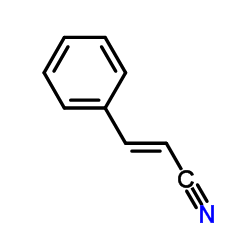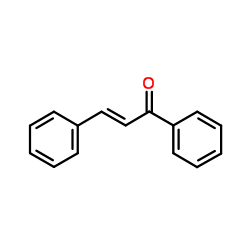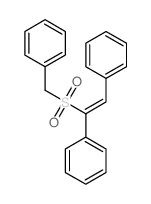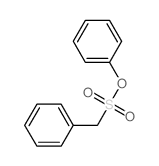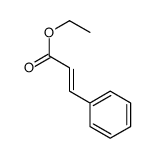329-98-6
| 中文名 | 苯甲基磺酰氟 |
|---|---|
| 英文名 | phenylmethanesulfonyl fluoride |
| 中文别名 |
苯甲磺酰氟
苄磺酰氟 苄基磺酰氟 PMSF 苯甲基磺酰氟 |
| 英文别名 |
α-Toluenesulfonyl fluoride
Benzenemethanesulfonyl fluoride Phenylmethanesulfonyl fluoride (PMSF) Phenylmethylsulfonyl fluoride Phenylmethanesulfonyl fluoride Phenylmethanesulphonyl fluoride Fluoride, Phenylmethanesulfonyl phenyl methane sulfonyl fluoride phenylmethyl-sulfonyl fluoride PMSF EINECS 206-350-2 Benzylsulfonyl Fluoride Benzylsulphonyl fluoride MFCD00007421 |
| 描述 | PMSF是通常用于制备细胞裂解物的不可逆的丝氨酸/半胱氨酸蛋白酶抑制剂。 |
|---|---|
| 相关类别 | |
| 体外研究 | PMSF(2mM)在Li +存在下抑制卡巴胆碱刺激的肌醇磷酸累积仅15%-19%。 PMSF对磷酸肌醇转换的抑制是由于磷酸肌醇分解后的一个或多个步骤[1]。 PMSF抑制T.brucei的血流中GPI中间体的肌醇残基的酰化。 PMSF抑制糖脂C的形成但不抑制体外脂肪酸重塑。 PMSF抑制了在procyclic锥虫中添加GPI酰化和乙醇胺磷酸酶,但在Hela细胞中没有[2]。 |
| 体内研究 | PMSF(0.1mL/10g b.wt,ip)产生抗伤害感受,如甩尾潜伏期评估中%MPE的剂量响应性增加所示,但未能产生明确的剂量反应性运动抑制。接受腹膜内注射PMSF的小鼠表现出大麻素效应,包括抗伤害感受,体温过低和不动,ED50值分别为86,224和206mg/kg。 PMSF(30 mg/kg)预处理增强了anandamide对甩尾反应(抗伤害感受),自发活动和活动性的影响,分别为5倍,10倍和8倍[3]。 |
| 动物实验 | 在测定中使用重18至25g的雄性ICR小鼠。将PMSF溶解在芝麻油中,并以0.1mL / 10g b.wt的体积腹膜内施用。在静脉注射anandamide或载体注射前10分钟始终给予PMSF。使小鼠适应评估室过夜而不中断食物或水。在静脉注射anandamide或载体给药后,如下评价每只动物:5分钟的甩尾潜伏期(抗伤害感受)反应和5至15分钟的自发(运动)活动;或核心(直肠)温度5分钟和环固定(僵住症)5至10分钟。 |
| 参考文献 |
| 密度 | 1.3±0.1 g/cm3 |
|---|---|
| 沸点 | 285.7±19.0 °C at 760 mmHg |
| 熔点 | 92-95 °C |
| 分子式 | C7H7FO2S |
| 分子量 | 174.193 |
| 闪点 | 126.6±21.5 °C |
| 精确质量 | 174.015076 |
| PSA | 42.52000 |
| LogP | 2.33 |
| 外观性状 | 白色至奶油色固体 |
| 蒸汽压 | 0.0±0.6 mmHg at 25°C |
| 折射率 | 1.522 |
| 储存条件 | 室温保存。 |
| 水溶解性 | hydrolysis |
| 分子结构 | 1、 摩尔折射率:40.31 2、 摩尔体积(m3/mol):132.2 3、 等张比容(90.2K):336.7 4、 表面张力(dyne/cm):42.0 5、 极化率(10 -24cm 3):15.98 |
| 计算化学 | 1.疏水参数计算参考值(XlogP):无 2.氢键供体数量:0 3.氢键受体数量:3 4.可旋转化学键数量:2 5.互变异构体数量:无 6.拓扑分子极性表面积42.5 7.重原子数量:11 8.表面电荷:0 9.复杂度:199 10.同位素原子数量:0 11.确定原子立构中心数量:0 12.不确定原子立构中心数量:0 13.确定化学键立构中心数量:0 14.不确定化学键立构中心数量:0 15.共价键单元数量:1 |
| 更多 | 一、物性数据 性状:白色至微黄色粉末 密度(g/mL,25/4℃):0.797 相对蒸汽密度(g/mL,空气=1):不可用 熔点(ºC):90-94 沸点(ºC,常压):112 沸点(ºC,5.2kPa):不可用 折射率:不可用 闪点(ºC):不可用 比旋光度(º):不可用 自燃点或引燃温度(ºC):不可用 蒸气压(kPa,25ºC):不可用 饱和蒸气压(kPa,60ºC):不可用 燃烧热(KJ/mol):不可用 临界温度(ºC):不可用 临界压力(KPa):不可用 油水(辛醇/水)分配系数的对数值:不可用 爆炸上限(%,V/V):不可用 爆炸下限(%,V/V):不可用 溶解性:难溶于水,且在水溶液中非常不稳定,容易分解。可溶于异丙醇、乙醇、甲醇、二甲苯和石油醚。 |
Synonym:Phenylmethylsulfonyl fluoride; PMSF; Benzenemethanesulfonyl fluorid Section 2 - COMPOSITION, INFORMATION ON INGREDIENTS
Risk Phrases: 34 Section 3 - HAZARDS IDENTIFICATION EMERGENCY OVERVIEW
Causes burns.Moisture sensitive.Corrosive. Potential Health Effects Eye: Causes eye burns. Contact with eyes may cause severe irritation, and possible eye burns. Skin: Causes skin burns. Ingestion: May cause severe and permanent damage to the digestive tract. Causes gastrointestinal tract burns. Inhalation: May cause severe irritation of the respiratory tract with sore throat, coughing, shortness of breath and delayed lung edema. Causes chemical burns to the respiratory tract. Chronic: No information found. Section 4 - FIRST AID MEASURES Eyes: Immediately flush eyes with plenty of water for at least 15 minutes, occasionally lifting the upper and lower eyelids. Get medical aid immediately. Do NOT allow victim to rub eyes or keep eyes closed. Extensive irrigation with water is required (at least 30 minutes). Skin: Get medical aid immediately. Flush skin with plenty of water for at least 15 minutes while removing contaminated clothing and shoes. Wash clothing before reuse. Destroy contaminated shoes. Ingestion: Do not induce vomiting. If victim is conscious and alert, give 2-4 cupfuls of milk or water. Never give anything by mouth to an unconscious person. Get medical aid immediately. Inhalation: Get medical aid immediately. Remove from exposure and move to fresh air immediately. If breathing is difficult, give oxygen. Do NOT use mouth-to-mouth resuscitation. If breathing has ceased apply artificial respiration using oxygen and a suitable mechanical device such as a bag and a mask. Notes to Physician: Antidote: None reported. Section 5 - FIRE FIGHTING MEASURES General Information: As in any fire, wear a self-contained breathing apparatus in pressure-demand, MSHA/NIOSH (approved or equivalent), and full protective gear. During a fire, irritating and highly toxic gases may be generated by thermal decomposition or combustion. Extinguishing Media: Do NOT use water directly on fire. Use foam, dry chemical, or carbon dioxide. Section 6 - ACCIDENTAL RELEASE MEASURES General Information: Use proper personal protective equipment as indicated in Section 8. Spills/Leaks: Clean up spills immediately, observing precautions in the Protective Equipment section. Sweep up, then place into a suitable container for disposal. Provide ventilation. Section 7 - HANDLING and STORAGE Handling: Wash thoroughly after handling. Do not get in eyes, on skin, or on clothing. Keep container tightly closed. Do not ingest or inhale. Use with adequate ventilation. Discard contaminated shoes. Storage: Keep container closed when not in use. Store in a cool, dry, well-ventilated area away from incompatible substances. Corrosives area. Keep containers tightly closed. Section 8 - EXPOSURE CONTROLS, PERSONAL PROTECTION Engineering Controls: Facilities storing or utilizing this material should be equipped with an eyewash facility and a safety shower. Use adequate general or local exhaust ventilation to keep airborne concentrations below the permissible exposure limits. Exposure Limits CAS# 329-98-6: United States OSHA: 2.5 mg/m3 TWA (as F) (listed under Fluorides Personal Protective Equipment Eyes: Wear appropriate protective eyeglasses or chemical safety goggles as described by OSHA's eye and face protection regulations in 29 CFR 1910.133 or European Standard EN166. Skin: Wear appropriate protective gloves to prevent skin exposure. Clothing: Wear appropriate protective clothing to prevent skin exposure. Respirators: Follow the OSHA respirator regulations found in 29 CFR 1910.134 or European Standard EN 149. Use a NIOSH/MSHA or European Standard EN 149 approved respirator if exposure limits are exceeded or if irritation or other symptoms are experienced. Section 9 - PHYSICAL AND CHEMICAL PROPERTIES Physical State: Needles Color: white Odor: None reported. pH: Not available. Vapor Pressure: Not available. Viscosity: Not available. Boiling Point: Not available. Freezing/Melting Point: 92.00 - 94.00 deg C Autoignition Temperature: Not available. Flash Point: Not available. Explosion Limits, lower: Not available. Explosion Limits, upper: Not available. Decomposition Temperature: Solubility in water: hydrolysis Specific Gravity/Density: Molecular Formula: C7H7FO2S Molecular Weight: 174.19 Section 10 - STABILITY AND REACTIVITY Chemical Stability: Stable under normal temperatures and pressures. Conditions to Avoid: Incompatible materials, exposure to moist air or water. Incompatibilities with Other Materials: Strong oxidizing agents, strong bases, moisture. Hazardous Decomposition Products: Carbon monoxide, oxides of sulfur, carbon dioxide, hydrogen fluoride gas. Hazardous Polymerization: Has not been reported. Section 11 - TOXICOLOGICAL INFORMATION RTECS#: CAS# 329-98-6: XT8040000 LD50/LC50: CAS# 329-98-6: Oral, mouse: LD50 = 200 mg/kg. Carcinogenicity: alpha-Toluenesulfonyl fluoride - Not listed by ACGIH, IARC, or NTP. Other: See actual entry in RTECS for complete information. Section 12 - ECOLOGICAL INFORMATION Section 13 - DISPOSAL CONSIDERATIONS Dispose of in a manner consistent with federal, state, and local regulations. Section 14 - TRANSPORT INFORMATION IATA Shipping Name: CORROSIVE SOLID, N.O.S.* Hazard Class: 8 UN Number: 1759 Packing Group: II IMO Shipping Name: CORROSIVE SOLID, N.O.S. Hazard Class: 8 UN Number: 1759 Packing Group: II RID/ADR Shipping Name: CORROSIVE SOLID, N.O.S. Hazard Class: 8 UN Number: 1759 Packing group: II Section 15 - REGULATORY INFORMATION European/International Regulations European Labeling in Accordance with EC Directives Hazard Symbols: C Risk Phrases: R 34 Causes burns. Safety Phrases: S 24/25 Avoid contact with skin and eyes. WGK (Water Danger/Protection) CAS# 329-98-6: No information available. Canada CAS# 329-98-6 is listed on Canada's DSL List. CAS# 329-98-6 is not listed on Canada's Ingredient Disclosure List. US FEDERAL TSCA CAS# 329-98-6 is listed on the TSCA inventory. SECTION 16 - ADDITIONAL INFORMATION N/A |
|
毒理学数据: 二、毒理学数据: 急性毒性:不可用。 生态学数据: 三、生态学数据: 1、其它有害作用:该物质对环境可能有危害,对水体应给予特别注意。 CHEMICAL IDENTIFICATION
HEALTH HAZARD DATAACUTE TOXICITY DATA
|
| 符号 |


GHS05, GHS06 |
|---|---|
| 信号词 | Danger |
| 危害声明 | H301-H314 |
| 警示性声明 | P280-P305 + P351 + P338-P310 |
| 个人防护装备 | Eyeshields;Faceshields;full-face particle respirator type N100 (US);Gloves;respirator cartridge type N100 (US);type P1 (EN143) respirator filter;type P2 (EN 143) respirator cartridges;type P3 (EN 143) respirator cartridges |
| 危害码 (欧洲) | T:Toxic; |
| 风险声明 (欧洲) | R25;R34 |
| 安全声明 (欧洲) | S7-S16-S45-S36/37/39-S28A-S26 |
| 危险品运输编码 | UN 3261 8/PG 2 |
| WGK德国 | 3 |
| RTECS号 | XT8050000 |
| 包装等级 | III |
| 危险类别 | 8 |
| 海关编码 | 2904909090 |
| 上游产品 2 | |
|---|---|
| 下游产品 10 | |
| 海关编码 | 2904909090 |
|---|---|
| 中文概述 | 2904909090 其他烃的磺化、硝化、亚硝化衍生物(不论是否卤化). 增值税率:17.0% 退税率:9.0% 监管条件:无 最惠国关税:5.5% 普通关税:30.0% |
| 申报要素 | 品名, 成分含量, 用途 |
| Summary | HS:2904909090 sulphonated, nitrated or nitrosated derivatives of hydrocarbons, whether or not halogenated VAT:17.0% Tax rebate rate:9.0% Supervision conditions:none MFN tariff:5.5% General tariff:30.0% |





![1-morpholin-4-yl-8-phenyl-7$l^{6}-thiabicyclo[4.2.0]octane 7,7-dioxide结构式](https://image.chemsrc.com/caspic/211/19158-30-6.png)
